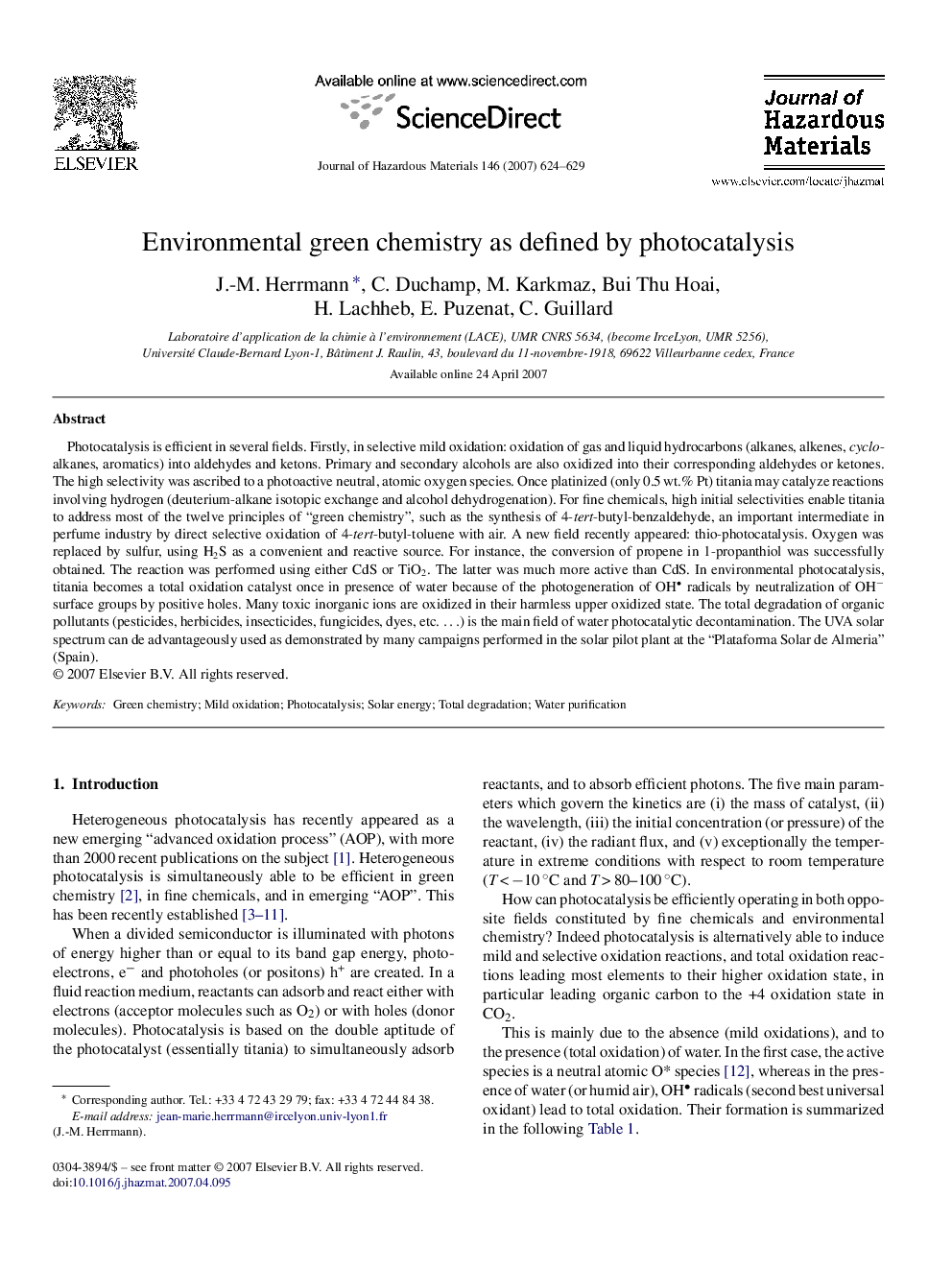| Article ID | Journal | Published Year | Pages | File Type |
|---|---|---|---|---|
| 584641 | Journal of Hazardous Materials | 2007 | 6 Pages |
Abstract
Photocatalysis is efficient in several fields. Firstly, in selective mild oxidation: oxidation of gas and liquid hydrocarbons (alkanes, alkenes, cyclo-alkanes, aromatics) into aldehydes and ketons. Primary and secondary alcohols are also oxidized into their corresponding aldehydes or ketones. The high selectivity was ascribed to a photoactive neutral, atomic oxygen species. Once platinized (only 0.5 wt.% Pt) titania may catalyze reactions involving hydrogen (deuterium-alkane isotopic exchange and alcohol dehydrogenation). For fine chemicals, high initial selectivities enable titania to address most of the twelve principles of “green chemistry”, such as the synthesis of 4-tert-butyl-benzaldehyde, an important intermediate in perfume industry by direct selective oxidation of 4-tert-butyl-toluene with air. A new field recently appeared: thio-photocatalysis. Oxygen was replaced by sulfur, using H2S as a convenient and reactive source. For instance, the conversion of propene in 1-propanthiol was successfully obtained. The reaction was performed using either CdS or TiO2. The latter was much more active than CdS. In environmental photocatalysis, titania becomes a total oxidation catalyst once in presence of water because of the photogeneration of OH radicals by neutralization of OHâ surface groups by positive holes. Many toxic inorganic ions are oxidized in their harmless upper oxidized state. The total degradation of organic pollutants (pesticides, herbicides, insecticides, fungicides, dyes, etc. â¦) is the main field of water photocatalytic decontamination. The UVA solar spectrum can de advantageously used as demonstrated by many campaigns performed in the solar pilot plant at the “Plataforma Solar de Almeria” (Spain).
Related Topics
Physical Sciences and Engineering
Chemical Engineering
Chemical Health and Safety
Authors
J.-M. Herrmann, C. Duchamp, M. Karkmaz, Bui Thu Hoai, H. Lachheb, E. Puzenat, C. Guillard,
